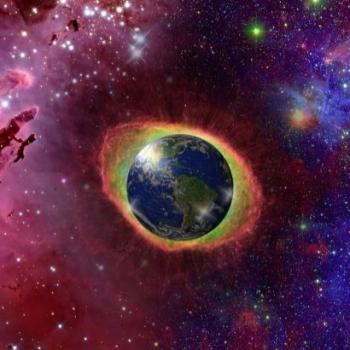I know Philip Heselton hoped to find (but did not assume that he would) evidence that Gerald Gardner’s friends were practicing a rudimentary form of Gardnerian Craft in the 1930s. As he shows in Witchfather, he did not find any.
He discovered quite a few people in Gardner’s circle of occultist friends who may have had a coven of sorts in the late 1930s, and some of whom may have worked with or cooperated with Gerald and Edith in founding the first coven after the war, but what they most resembled is the circle of friends who founded the NROOGD in the fall of 1967. Both groups had most of the resources for recreating or just creating a religion of witchcraft, but the match had not yet been applied to the bonfire.
There are even some parallels between the two groups. Glenn Turner’s parents played a role somewhat similar to that of Dorothy Clutterbuck. There was an obvious parallel to the romance between Edith and Gerald. There were the same sort of overlapping memberships with other occult and metaphysical groups, and so on. But so far there is no evidence of contact with any other sort of group that called what they were doing witchcraft. Even if there were, it would be a witchcraft like that of Victor’s Harpy Coven, or Olney Richmond, or Joe’s friend Mac, or the Ozark witches: lacking the key characteristics that define Gardnerian Craft as a specific religion.
Where did those “key characteristics” come from? The conservative Gardnerians would like to be able to trace them to a generation preceding Gardner and so back into the mists of time, just as conservative Christians want to believe that there was a traditional “life of Jesus” circulating before Mark invented the gospel as a literary form. But, as Hutton says, the paper trail stops in 1946, and the trail of the key characteristics stops with Gardner.
I think Philip’s hypothesis that Mother Sabine believed in the 1920s that she was a reincarnated witch has some truth to it, but then why wasn’t there a coven in the 1920s? There’s no evidence of that. Rather, I think it was Edith who believed she was a reincarnated witch, that she wrote the poem in Witchcraft Today about that, that she may have initiated Gardner by means of an improvised ritual, or, far more likely, that Gardner had a brainstorm while making love to Edith (or shortly thereafter) in which all the essential concepts of the Craft as a new religion crashed into his consciousness in an instant, and that he spent the rest of his life reifying that vision.
Similarly, I believe that all the essential concepts of Christianity crashed in an instant into the consciousness of whoever first had the experience of seeing Joshua again. I think all the essential concepts of Mormonism crashed into Joseph’s consciousness when he had his vision in the grove, and that another person present at either moment would not have perceived anything.
In all three cases: there was no preceding tradition, and no evidence of any such thing to find, and it took years to work out the implications of the vision and invent an adequate social embodiment of them.
I suspect I can find more parallels to these cases. It’s quite possible that Dorothy would have let neighbors use her house for gatherings, even if she was not personally involved in what they were doing. However, I think Hutton’s discovery that Edith was the head of the Rosicrucian theater group after Sullivan passed, whereas Dorothy was the head of a different theater group, shows the pattern: as he said, Gardner used Dorothy’s name as a cover-up to protect Edith’s privacy.
Still, the fact that Dorothy was apparently a devout Episcopalian is NOT evidence that she was not involved. We had a devout Episcopalian in our original NROOGD core group. She even had clearance from her pastor, who felt that a little Goddess worship never hurt anyone.
An amazing number of people (though not so many as 25 years ago) still don’t get my basic point: even if Gardner’s crowd had reified Murray’s description and combined it with ceremonial magic and Co-Masonry (though there’s no evidence that they had done so), that would have been a Pagan religion in the current sense, but it still was not the *same* religion as Gardnerian Wicca, since it still lacked most of the characteristics that define Wicca as a specific religion















